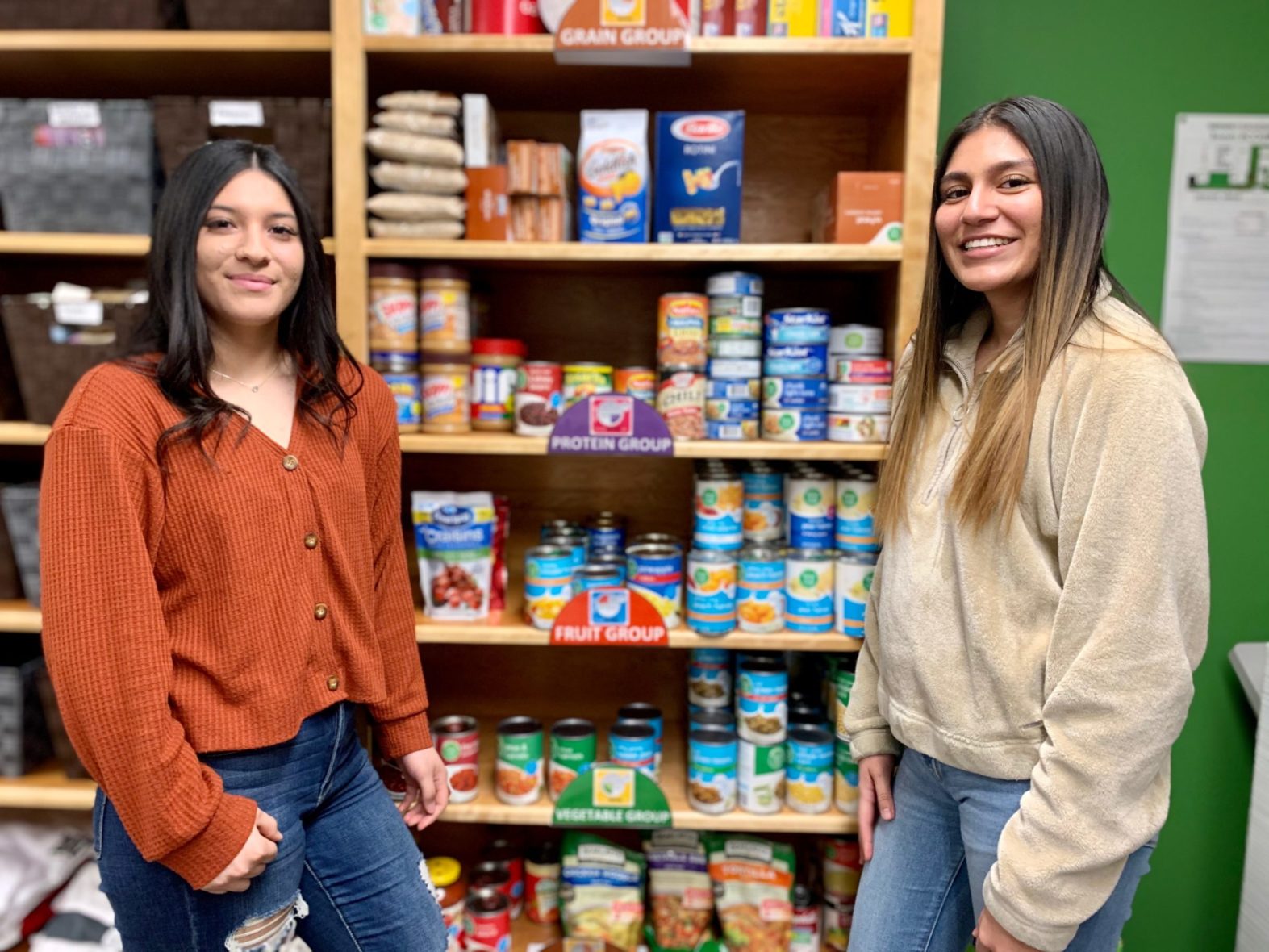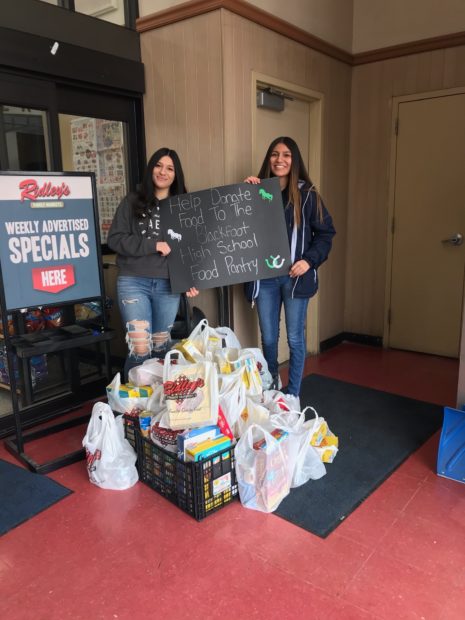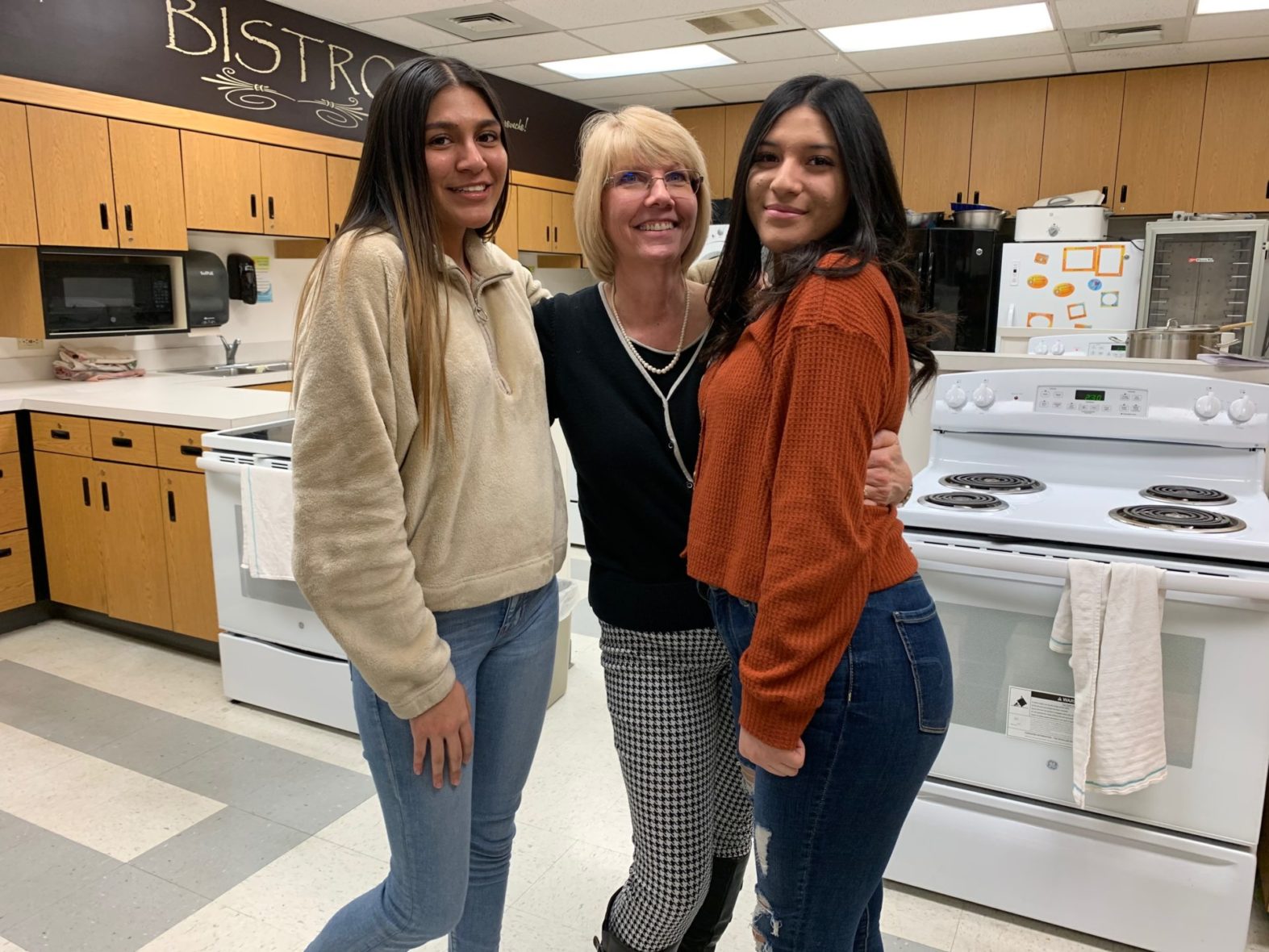
Growing up in a single-parent home with four siblings was at times a struggle for Dayana Medellin, a senior at Blackfoot High School.
They didn’t always have money for food or other necessities.
“It can be hard,” said Medellin. “Food and hygiene — it’s expensive.”
The family’s hardships eventually improved, but memories stuck.
This year, Medellin and fellow senior Gaby Bobadilla didn’t like that some of their peers were going hungry, so they put a food pantry in the high school.
‘Anything they need’
Blackfoot High already had a hygiene pantry in the counseling office, a place where needful students go privately for a stick of deodorant, toothpaste, a fresh T-shirt and more.
The hygiene pantry gets good use, Blackfoot counselors say. Around 41 percent of the high school’s students qualify for federal free and reduced-price meals, one measure of poverty. And the need for food and other basic necessities often go together.
Despite a hygiene pantry and federal food subsidies, Medellin and Bobadilla wondered about students who might go hungry before or after school.
So the girls floated the idea of creating a food pantry to go beside hygiene items for a senior project.
“We asked if it was a good idea and they said yes,” said Medellin, pointing to the boxes of Cheerios, tuna cans, soups, noodles and more now lining shelves beside the hygiene pantry. A clod of grocery bags hangs nearby for students hoping to fill up on necessities.
“Anything they need,” said Medellin.
Collecting food
Stockpiling the right items was one challenge, the girls said. Things like nutrition and shelf life had to be considered.
Blackfoot home economics teacher Tammy Luker helped connect the girls to Eat Smart Idaho, a University of Idaho extension that provides nutrition and physical activity education to low-income Idahoans.

The girls soon had a checklist of healthy pantry items: grains, fruits and vegetables, meats and other proteins and dairy items.
Anything they need.
Next stop: local grocery stores to ask for donations — a learning experience in its own right.
“Some people were rude,” said Bobadilla.
Others surprised the girls with their generosity.
“One guy gave us at least 10 jars of peanut butter,” said Medellin. “Those are like $2 or $3 apiece, so that was really nice of him.”
As the food piled up, more donations came. Within a couple hours, the girls, Luker and a few other students had enough to fill some shelves.
One week in, the girls are already making plans to restock items taken by students.
Medellin flashed an inventory sheet the girls use to make sure shelves stay stocked for the rest of the school year.
Luker plans to help students maintain the pantry after the girls graduate.
“We want it to continue,” said Bobadilla.

